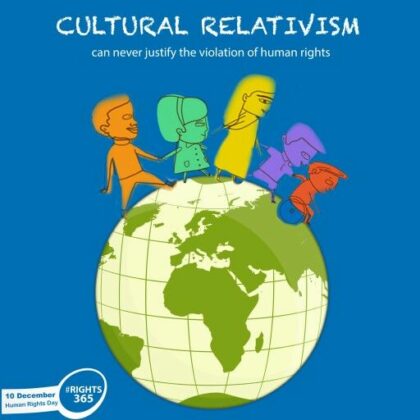Cultural relativism is a multifaceted concept that gains new dimensions with each discussion. At its core, cultural relativism posits that beliefs, values, and practices should be understood in their own cultural contexts rather than judged through the lens of another culture. This principle serves as a foundation for fostering understanding and respect among diverse societies, particularly in an increasingly globalized world. However, by elevating this discussion to the realm of artistic expression, we can engage with cultural relativism in a way that piques curiosity, encourages introspection, and, perhaps, promises a transformative shift in perspective.
One powerful medium for invoking this examination of cultural relativism is the art of poster drawing. Visual art has a unique capacity to convey complex ideas in a succinct and impactful manner. When it comes to cultural relativism, a well-crafted poster can encapsulate competing realities and challenge individuals to reconsider their preconceived notions. Rather than merely presenting facts, a poster drawing can evoke emotional responses, drawing viewers into a deeper exploration of cultural diversity.
The visual elements of a poster can include an array of symbols, colors, and textures that reflect specific cultural narratives. For example, a poster could juxtapose elements from Western and Indigenous cultures, ensuring that each visual component is emblematic of the stories and realities of those cultures. Through this juxtaposition, observers are prompted to question their ingrained biases and consider the fluidity of culture. Aesthetic choices speak volumes, and when they are thoughtfully made, they serve to elevate awareness.
In understanding cultural relativism, we must also grapple with its implications for moral and ethical judgments. The essence of cultural relativism argues that no single culture holds supremacy over another, which can lead some to contend that all cultural practices should be accepted as equally valid. However, this perspective does not absolve individuals from confronting practices that may contravene universal human rights. This duality adds depth to any artistic representation. A poster drawing can creatively articulate this tension, illuminating the nuances of belief systems. By doing so, it engages viewers in conversations that can lead to growth and a broader understanding of the world.
Importantly, the impact of cultural relativism on environmental issues cannot be understated. Each culture has its unique relationship with the environment, shaped by tradition, belief, and necessity. This connection often manifests in the myriad ways communities approach sustainability and conservation. A poster that captures the essence of cultural relativism in environmentalism could emphasize how different civilizations have adapted to their ecological contexts, revealing a tapestry of knowledge that empowers powerful dialogues on sustainability practices.
Artworks that highlight these cultural narratives act as conduits for awareness and education. An engaging poster drawing can entice viewers to learn about Indigenous land stewardship practices, which often remain underrepresented. By showcasing art that illustrates these practices, we unveil a wealth of indigenous knowledge and practices that have persevered through generations. Such representations validate these cultures while providing inspiration for sustainable approaches to environmental conservation.
Moreover, a cultural relativism poster can function as a medium for advocacy. It invites audiences to engage with pressing societal challenges, such as climate change, through varied cultural lenses. In addressing climate change, individuals often gravitate toward a singular narrative—typically that of Western industrialized societies. However, understanding various cultural contexts surrounding climate issues can inspire holistic solutions that are inclusive and equitable. By promoting a multiplicity of viewpoints, a poster can elevate underrepresented voices, forging connections that transcend cultural divides.
As we explore the ways in which cultural relativism can be visually represented, we uncover the importance of engagement. Viewers should be impelled to scrutinize the images presented before them, encouraged to unpack the underlying narratives depicted in each artistic choice. This curiosity-driven approach fosters critical thinking and promotes ongoing discourse. When individuals are invited into conversations about cultural relativism, they may cultivate a broader sense of empathy, compassion, and responsibility toward those who navigate vastly different cultural landscapes.
Furthermore, the implications of cultural relativism extend to educational institutions. The integration of carefully designed posters into learning environments can catalyze discussions that extend beyond surface-level comprehension. When students engage with cultural relativism through visual art, they become active participants in their learning journeys, examining and deconstructing narratives that may seem distant yet are intricately tied to their own realities. Educators who harness this artistic approach can inspire a generation of empathetic leaders vested in multicultural understanding.
Ultimately, the exploration of cultural relativism through poster drawing beckons us to notice the world with fresh eyes. In acknowledging the broader spectrum of human experience, we open avenues for dialogue that can pave the way toward mutual respect and understanding. As individuals engage with diverse cultural practices, they may discover that their own understandings of culture, morality, and environmental stewardship are malleable, shaped by a mosaic of influences that are both intricate and beautiful.
In summary, cultural relativism eloquently intertwines with the art of poster drawing, offering a vibrant tapestry that encourages curiosity and introspection. The dynamic interplay between visual expression and cultural understanding constitutes an essential dialogue in our globalized societies. As we engage with these constructs, we embrace the potential for transformative perspectives—ones that honor diversity while inviting critical reflection on our interconnected world. Each poster serves as a symbol of this potential, opening pathways to richer dialogues that acknowledge the intricate mosaic of human experience.
